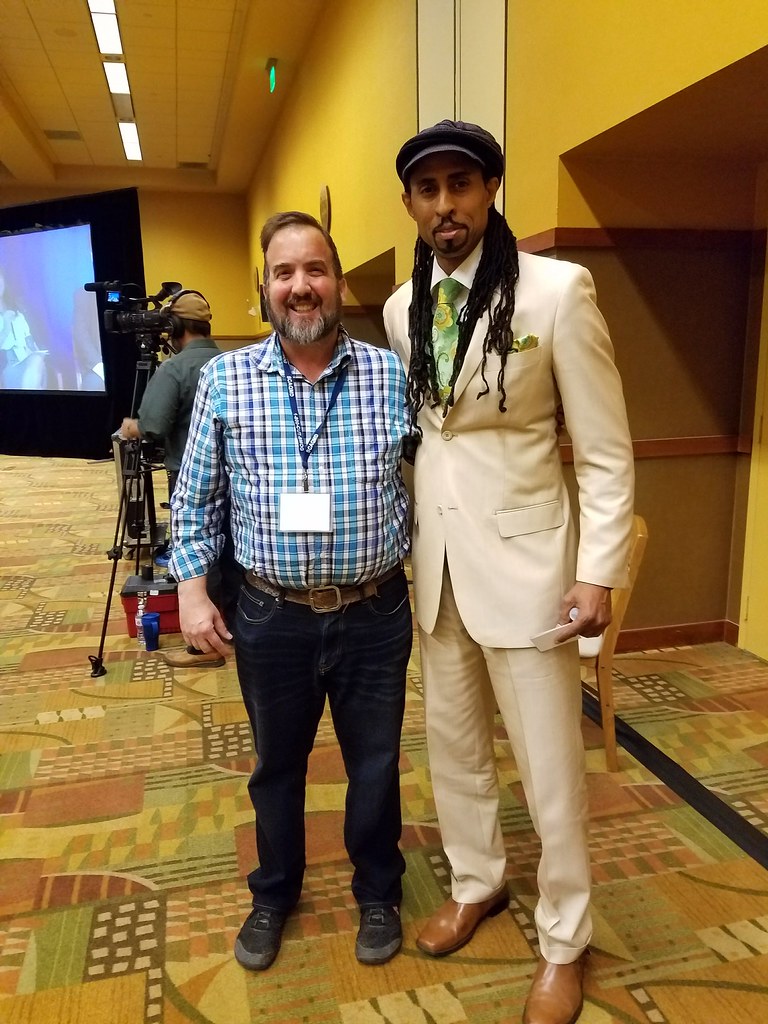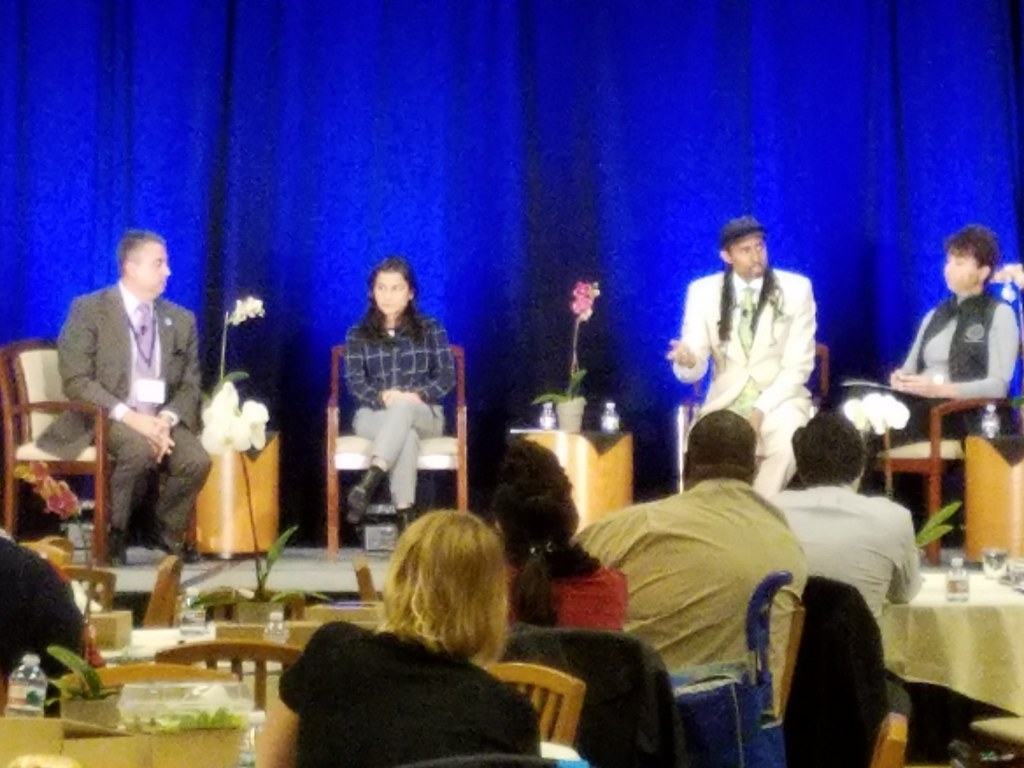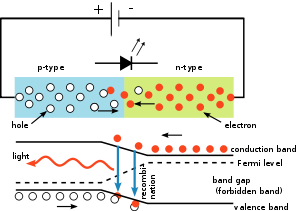 |
| http://time.com/4191864/flint-water-crisis-lead-contaminated-michigan/ |
I imagine your answer would probably be NO. I would also imagine that you would like to breathe clean air and have clean fresh water to drink. Especially, if other residents of the United States have access to both. What about if a factory were to open up within a quarter mile of your house which will spew pollutants into the air? Are you alright with that? What if the prices of housing is cheaper near the air polluting plant? What if the city gives you no choice in the matter?
These are all questions which highlight the need for 'Environmental Justice' for all residents of the United States. Who is in charge of ensuring that the citizens of the U.S. are provided clean healthy natural resources? The answer is the Environmental Protection Agency.
A couple of weeks ago, I had the wonderful opportunity of meeting an 'environmental justice hero' -- Mustafa Ali -- who is shown in the picture below with me:
He is one of the founders of the 'environmental justice section' of the Environmental Protection Agency. And up until March of this year, he worked hard to fight for justice under the banner of the EPA for 24 years. With all of the proposed cuts to the EPA and the threats to the environment, Mustafa sent EPA Scott Pruitt a letter of resignation signaling that the time had come to move on. Especially since the current administration has placed environmental justice on the back burner at the moment.
Currently, he is heading up ventures to spread the word about environmental justice in a variety of ways -- speaking, non-profit organizations, government panels, and various universities. A brief biographical description of him can be found on the "Green 2.0" website formally known as the Green Diversity Initiative:
Mustafa Santiago Ali has been a National Speaker, Trainer and Facilitator on Social Justice and Environmental Justice issues for the past 17 years. During that time Mustafa has worked with communities on both the domestic and international front to secure environmental, health and economic justice. He currently serves as an Senior Advisor to EPA Administrator Gina McCarthy on Environmental Justice. He is also the Designated Federal Official for the A Workgroup on Nationally Consistent EJ Screening Approaches of the National Environmental Justice Advisory Council (NEJAC), a federal advisory committee to the U.S. EPA. Mustafa Ali served as a Brookings Institute Congressional Fellow in the Office of Congressman John Conyers in FY 2007-08. His portfolio as a Legislative Assistant focused on Foreign Policy in Africa and South America, Homeland Security, Health Care, Appropriations and Environmental Justice. Mr. Ali is a former instructor at West Virginia University and Stanford University in Washington. He guest lecturers at Universities and Colleges including, George Washington University, Georgetown University, Albany Law School and Howard University Law School.
Additionally, he serves as the vice president of the "Hip Hop Caucus" on environmental issues which serves as a conduit from the Hip Hop community to the civic community to build strength and power in matters affecting the community at large -- i.e. community revitalization. He is a true environmental hero and an ardent advocate for environmental justice for communities across the nation. All advocacy participants owe a great deal to leaders such as Mustafa who pave the way and guide us in promoting growth and justice through change at various levels of the government.
Environmental Justice?
As I mentioned above, a couple of weeks ago, I had the opportunity to join other stakeholders (corporations, organizations, state and federal officials) downtown in Los Angeles for a day conference on Environmental Justice. The event was hosted by the Southern California Air Quality Management District - with a mission stated below from the webpage:
SCAQMD is the air pollution control agency for all of Orange County and the urban portions of Los Angeles, Riverside and San Bernardino counties, among the smoggiest regions of the U.S. We are committed to protecting the health of residents, while remaining sensitive to businesses.
The conference was the '3rd Annual Conference On Environmental Justice' as highlighted in the press release. During the day, there were break out sessions in the morning and common panels in the afternoon. I want to highlight a specific panel discussion which included the following: Mustafa Ali, Senator Nanette Barragan, and Senator Connie Leyva.
At the outset, Mustafa Ali was asked to define environmental justice and discuss broadly in terms the concept for change at the community level today. First, he suggested that the audience look up the "17 Rules of Environmental Justice" to get an understanding of the principles under which environmental justice advocates operate under. Here are 17 rules of Environmental Justice with the preamble as adopted on October 27th, 1991 in Washington D.C.:
Preamble WE THE PEOPLE OF COLOR, gathered together at this multinational People of Color Environmental Leadership Summit, to begin to build a national and international movement of all peoples of color to fight the destruction and taking of our lands and communities, do hereby re-establish our spiritual interdependence to the sacredness of our Mother Earth; to respect and celebrate each of our cultures, languages and beliefs about the natural world and our roles in healing ourselves; to insure environmental justice; to promote economic alternatives which would contribute to the development of environmentally safe livelihoods; and, to secure our political, economic and cultural liberation that has been denied for over 500 years of colonization and oppression, resulting in the poisoning of our communities and land and the genocide of our peoples, do affirm and adopt these Principles of Environmental Justice:1) Environmental justice affirms the sacredness of Mother Earth, ecological unity and the interdependence of all species, and the right to be free from ecological destruction.2) Environmental justice demands that public policy be based on mutual respect and justice for all peoples, free from any form of discrimination or bias.3) Environmental justice mandates the right to ethical, balanced and responsible uses of land and renewable resources in the interest of a sustainable planet for humans and other living things.4) Environmental justice calls for universal protection from nuclear testing, extraction, production and disposal of toxic/hazardous wastes and poisons and nuclear testing that threaten the fundamental right to clean air, land, water, and food.5) Environmental justice affirms the fundamental right to political, economic, cultural and environmental self-determination of all peoples.6) Environmental justice demands the cessation of the production of all toxins, hazardous wastes, and radioactive materials, and that all past and current producers be held strictly accountable to the people for detoxification and the containment at the point of production.7) Environmental justice demands the right to participate as equal partners at every level of decision-making including needs assessment, planning, implementation, enforcement and evaluation.8) Environmental justice affirms the right of all workers to a safe and healthy work environment, without being forced to choose between an unsafe livelihood and unemployment. It also affirms the right of those who work at home to be free from environmental hazards.9) Environmental justice protects the right of victims of environmental injustice to receive full compensation and reparations for damages as well as quality health care.10) Environmental justice considers governmental acts of environmental injustice a violation of international law, the Universal Declaration On Human Rights, and the United Nations Convention on Genocide.11) Environmental justice must recognize a special legal and natural relationship of Native Peoples to the U.S. government through treaties, agreements, compacts, and covenants affirming sovereignty and self-determination.12) Environmental justice affirms the need for urban and rural ecological policies to clean up and rebuild our cities and rural areas in balance with nature, honoring the cultural integrity of all our communities, and providing fair access for all to the full range of resources.13) Environmental justice calls for the strict enforcement of principles of informed consent, and a halt to the testing of experimental reproductive and medical procedures and vaccinations on people of color.14) Environmental justice opposes the destructive operations of multi-national corporations.15) Environmental justice opposes military occupation, repression and exploitation of lands, peoples and cultures, and other life forms.16) Environmental justice calls for the education of present and future generations which emphasizes social and environmental issues, based on our experience and an appreciation of our diverse cultural perspectives.17) Environmental justice requires that we, as individuals, make personal and consumer choices to consume as little of Mother Earth's resources and to produce as little waste as possible; and make the conscious decision to challenge and reprioritize our lifestyles to insure the health of the natural world for present and future generations.
Do any of the following rules sound unreasonable as demands? Each of us deserve to live in a clean environment free of contaminants. But as each of us know -- this is not the case for various parts of our nation today. Mustafa Ali stated the obvious -- pollution is asymmetrical in terms of geographical regions across the nation. More specifically, he alluded to the obvious that there exists environmental injustice which is occurring all over the nation and needs to be dealt with. Additionally, while defining a problem, a solution would be the natural progression during such a discussion. He stated very clearly that change has to come from the ground level up.
Change Starts At The Community Level?
As I mentioned above, the take home message of the panel above on which Mustafa Ali participated was that any change toward environmental justice must begin at the ground up. Meaning with the members of each community.
What is going on at the EPA with regard to Environmental Justice?
Before this year, the environmental justice department was alive an well at the EPA. Former EPA Administrator Gina McCarthy spear headed the initiative to have the input of various environmental groups (and small movements) featured on the EPA website under the heading "Environmental Justice in Action". Specifically, stories would be featured in a blog series -- starting with an introductory post by none other than Mustafa Ali -- which can be found here.
The video embedded on the blog series by former EPA Administrator Gina McCarthy is featured below (less than 2 minutes in length):
Here is a link to the list of blog posts in the series "Environmental Justice in Action" offered on the archives of the EPA website. The stories are truly inspirational to either the public or environmental advocates looking to promote change. Previous posts have appeared on this site which were written in part by or have a large component (in the form of a letter or excerpt) by iconic activists like Ralph Nader. Ralph Nader promotes the realization that change can happen from the ground level up too. Scroll down to the end of the blog post to access former blog posts discussing the need for greater community engagement.
The panel mentioned above at the Environmental Justice Conference with honored guests Senator Nanette Barragan, Senator Connie Leyva, and Mustafa Ali could be summed up as follows. Currently in Washington D.C. there is a war with environmental justice advocates. The current administration is pushing the deregulation of regulations at a record pace. Both Senators said that the workings in Washington D.C. were not as 'grave' as it appeared to be on the news. Updates were that the current administration was defunding certain federal agencies which is not great -- to shift funding to privatization. The shift is away from big government to privatization. Although, such a shift does have 'blow back' -- which is starting to appear.
The saving grace is that slowly there is a movement building. A movement that needs to be fueled by the local community groups across the nation. We are not far enough (in terms of damage) where a "point of no return" has occurred. But moving forward, advocates across the nation need to bring to the attention of their elected officials the need to address environmental injustices in their respective area. In order to promote large scale change, the public needs to organize and rise up to stand up against officials and demand justice. What justice?
Conclusion...
Each of us deserve to live in a neighborhood with clean natural resources available. Additionally, each of us deserve to breathe clean air. We should not have to compromise with 'big business' the quality of our air in the neighborhood and community around us. If these basic resources and geographical regions clean of contaminants are not available, then public citizens need to demand these needs from elected officials. Look around yourself in your region. Are there any gross violations of environmental justice? You may not even realize the contamination occurring around you.
The blog post above served as an 'introduction' to environmental justice. Future posts will be written with greater depth. First, a proper definition and an initial introduction is needed to let the idea of 'environmental justice' to sink in. With a proper definition in mind, each of us are enabled to now move forward and recognize injustices around us.
Related Blogs:
Environmental Entrepreneurs Weigh In On Repealing The Clean Power Plan
French President Macron Organizes Climate Conference With Pledges Of Trillions Of Dollars For Climate Risk Management From World Organizations
Ralph Nader Asks "Will the Federal Civil Service Defend Us?"
Activist Ralph Nader Gives Politicians Advice Post Hurricane Harvey
Activist Ralph Nader Calls To Each Pillar Of Society - A Call To Action.
Environmental Groups Question Environmental Protection Agency (EPA) Cuts
What Does An Official Letter From The White House Requesting Funds For Hurricane Harvey Look Like?
How Is Our Environment (Climate, etc.) Becoming Politicized?
Risks To The World By Activist Ralph Nader
Who Is In Charge Of The Department Of Energy?
Why Would A President Choose To Deregulate The Environmental Protection Agency?
What Does America Drinking Water Look Like With Little-to-No Regulation?
What Promises Did President Trump Make Science Research During His Campaign?
Can The President Prevent The Public From Learning About Scientific Research???



.svg/450px-LED%2C_5mm%2C_green_(en).svg.png)

